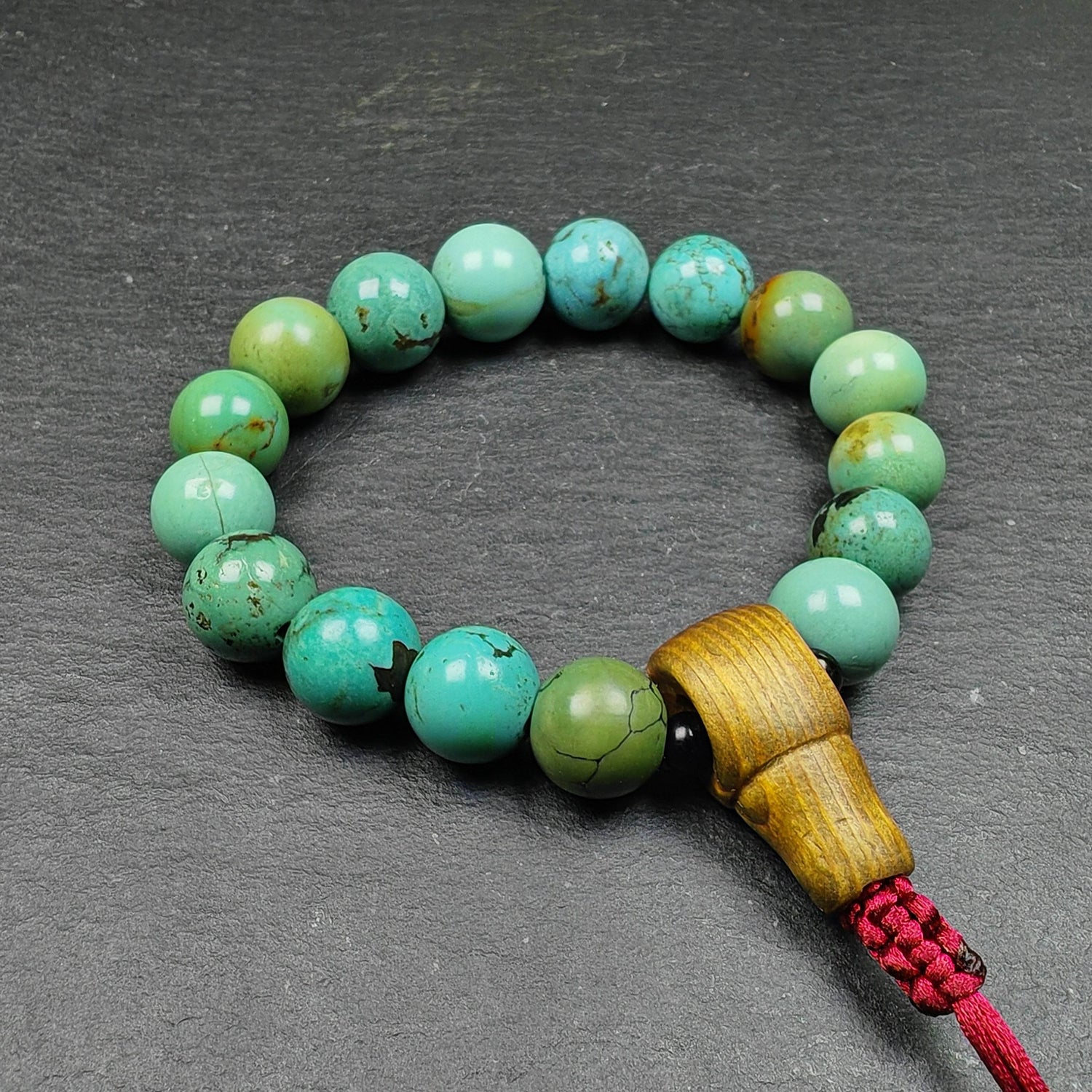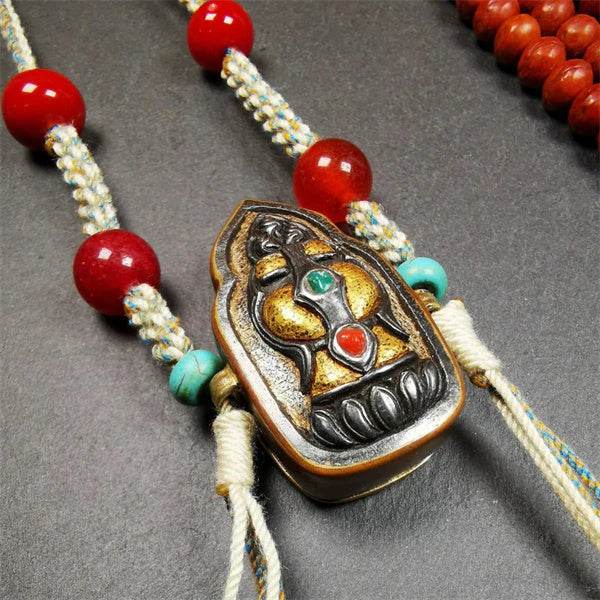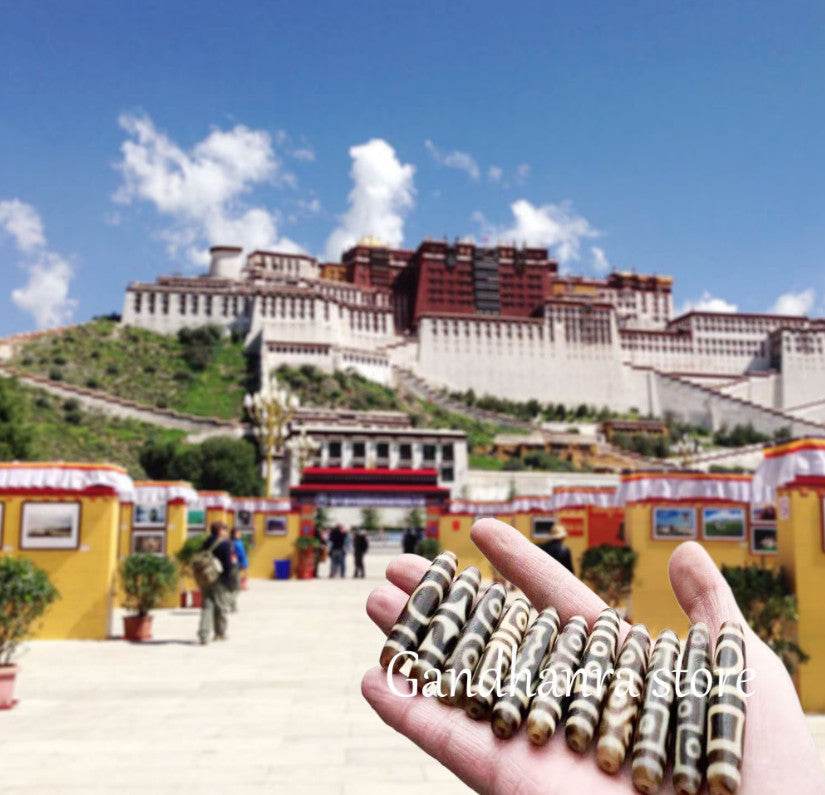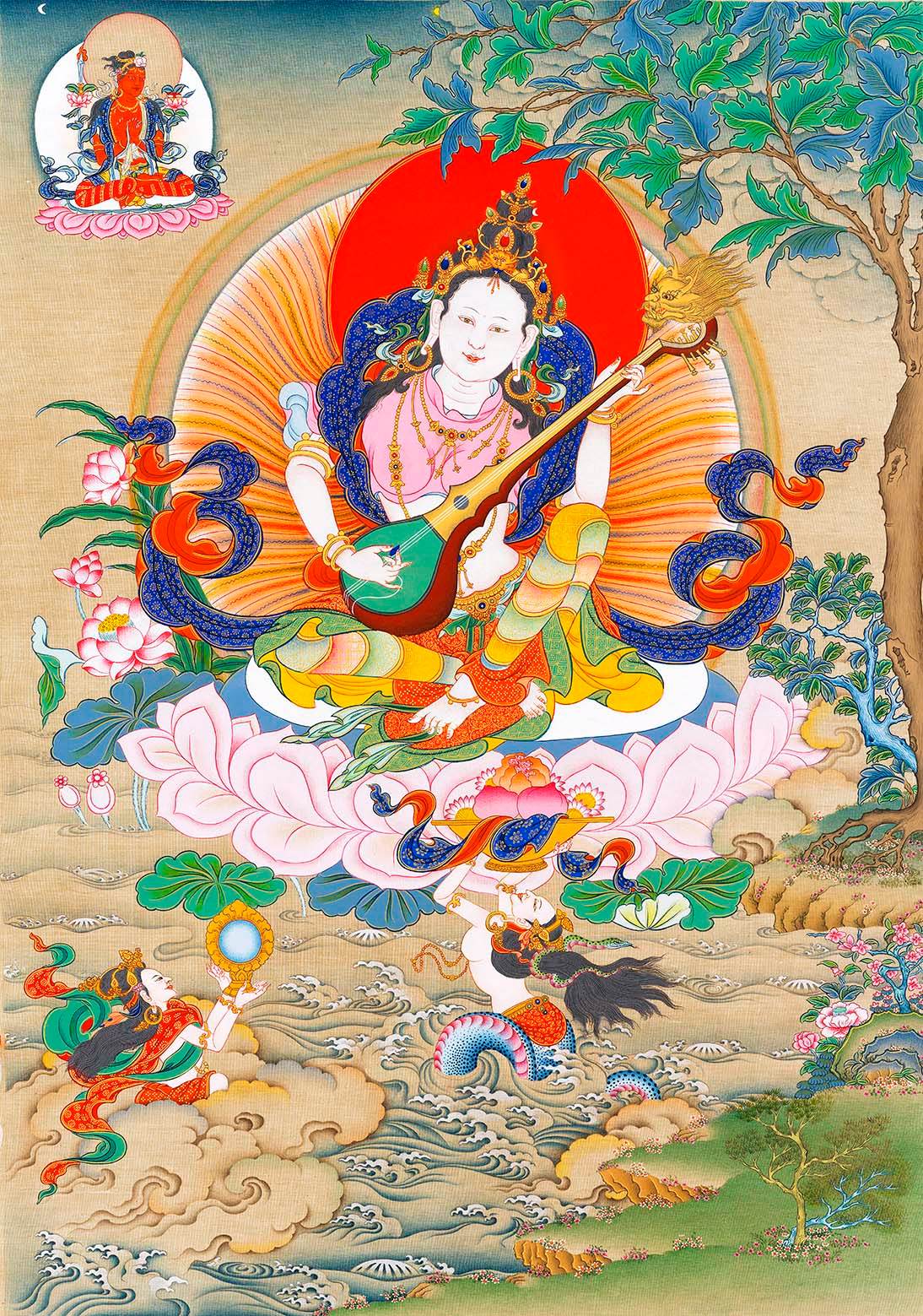
Treasures of Tibet on the West Coast

"Ivory Sculpture of Guru Padmasambhava"
17th century, Los Angeles County Museum of Art

"Master Sönam Tsemo of the Sakya School"
16th century, Los Angeles County Museum of Art
Founder of the school who died young (at age 40)

"Master Milarepa of the Kagyu School"
17th century, Los Angeles County Museum of Art
Milarepa's teachings on spiritual practice to a hunter

"Tibetan Emperor Songtsen Gampo"
17th century, Los Angeles County Museum of Art
A mighty ruler bestowed with religious identity and Dharma symbols

"Mahasiddha Naropa"
16th century, Los Angeles County Museum of Art

"Mad Yogi Heruka of Tsang - Rongpé Gyaltsen"
16th century, Los Angeles County Museum of Art
Art historian Alexander Powell III (1943– ) served as the director of the Los Angeles County Museum of Art (LACMA) from 1980 to 1992, a period scholars regard as the museum's "golden age." In Powell III's view, Asian art in the broadest sense was assuming a central role in art historical studies through new forms, with fresh concepts and unconventional perspectives continuously helping researchers glimpse the social landscapes and artistic practices of Asia's classical era. Due to his passion for American landscape painting, Powell III also turned his attention to the diverse forms of landscape (or mountain-water) paintings in Asian art.
As the largest art museum on the West Coast, LACMA houses nearly 400 masterpieces related to the "Himalayan-Tibetan" cultural sphere, typically categorized under the "South and Southeast Asian Art" collection (Building 5, Fourth Floor). In 1961, the original Los Angeles Museum of History, Science, and Art was divided into the Natural History Museum of Los Angeles County and the Los Angeles County Museum of Art (also known as LACMA). The Asian art boom (the third major collecting wave) beginning in the 1980s drew the favor of numerous West Coast collecting families to LACMA. Collectors donated a wealth of Tibetan-related artifacts to the museum (with nearly 14 core donor families) and funded specialized research institutions for art scholars and enthusiasts worldwide.

"The Twelve Deeds of Buddha Shakyamuni"
12th century, Los Angeles County Museum of Art

"Rahula in Densatil Style"
15th century, Los Angeles County Museum of Art

"Turquoise-Inlaid Brahmin Mahakala Statue"
15th century, Los Angeles County Museum of Art

"Lingrepa Pema Dorje"
Mid-18th century, Los Angeles County Museum of Art
Lingrepa Pema Dorje (གླིང་རལ་པ་པད་མ་རྡོ་རྗེ་; 1128-1188)
Founding Master of the Drukpa Kagyu School
Depicted in white-robed yogi appearance
Some texts describe him as having "arhat-like appearance"

"Tibetan Art: Collection of the Los Angeles County Museum of Art"
Book cover; Published in 1984
In 1984, art historian Pratapaditya Pal (1935– ) authored the Los Angeles County Museum of Art's collection catalog on the "Himalayan-Tibetan" cultural sphere. In the preface, director Alexander Powell III and Pratapaditya Pal reaffirmed LACMA's central research themes in Himalayan art history: portraiture traditions (including sacred iconography) and the multi-layered structures between the "sacred and secular" (such as interactions among ethnic groups and social classes). These research aims sought to challenge public misconceptions about Himalayan art—particularly the notion that Tibetan Buddhist art made no contributions to realism or everyday representation. While depicting divine realms, the faces of sages are rendered with striking clarity, as their recorded words and life stories are shaped and remembered through material forms. "This is a unique testament to the unity of flesh and spirit."
Idealized portrayals of figures are always simple, but preserving a subject's distinct personality and unique deeds is a far more challenging task—especially when such depictions must also be reflected in their external appearance. For us today, the physical features of sages who lived centuries ago are nearly impossible to ascertain, yet this same dilemma existed for artists working just a hundred (or even fifty) years after their subjects' lifetimes. Tibet's rich biographical literature provides a structured descriptive framework (with many remarkable details), while disciples' and devotees' personal memories were also incorporated into portrait-making. Depictions of "lineage transmission" and "canonical events" form the core of Tibetan portraiture traditions, believed to connect with a systematized form of presence—the multiple identities a figure could embody.

"Transmission of the Path and Fruit: Kunga Wangchuk and Gorampa"
Late 15th century, Los Angeles County Museum of Art
Left: Kunga Wangchuk (ཀུན་དགའ་དབང་ཕྱུག་; 1424-1478)
4th Throne Holder of Ngor Monastery, Sakya School (Term: 1465-1478)
Right: Gorampa Sönam Sengge (གོ་རམས་པ་བསོད་ནམས་སེང་གེ་; 1429-1489)
6th Throne Holder of Ngor Monastery, Sakya School (Term: 1483-1486)

Detail: Gorampa with a goatee

"Biographical Thangka of Kunga Tashi"
Early 18th century, Los Angeles County Museum of Art
Center Top: Kunga Tashi (ཀུན་དགའ་བཀྲ་ཤིས་; 1656-1711)
29th Sakya Trizin (Term: 1685-1711)
Likely created after 1705
Following the birth of his son Sonam Rinchen (བསོད་ནམས་རིན་ཆེན་; 1705-1741)

Detail: Master Kunga Tashi and family members (with black mole on right eye)

Detail: Master Kunga Tashi's ceremonial procession and attendants (Sakya Monastery)

"Tibetan Artistic Painting Reproduction: Soaring Dragon"
From a complete set of painting reproductions (Lhasa)
1652-1653, Los Angeles County Museum of Art







1 comment
6h1xxk